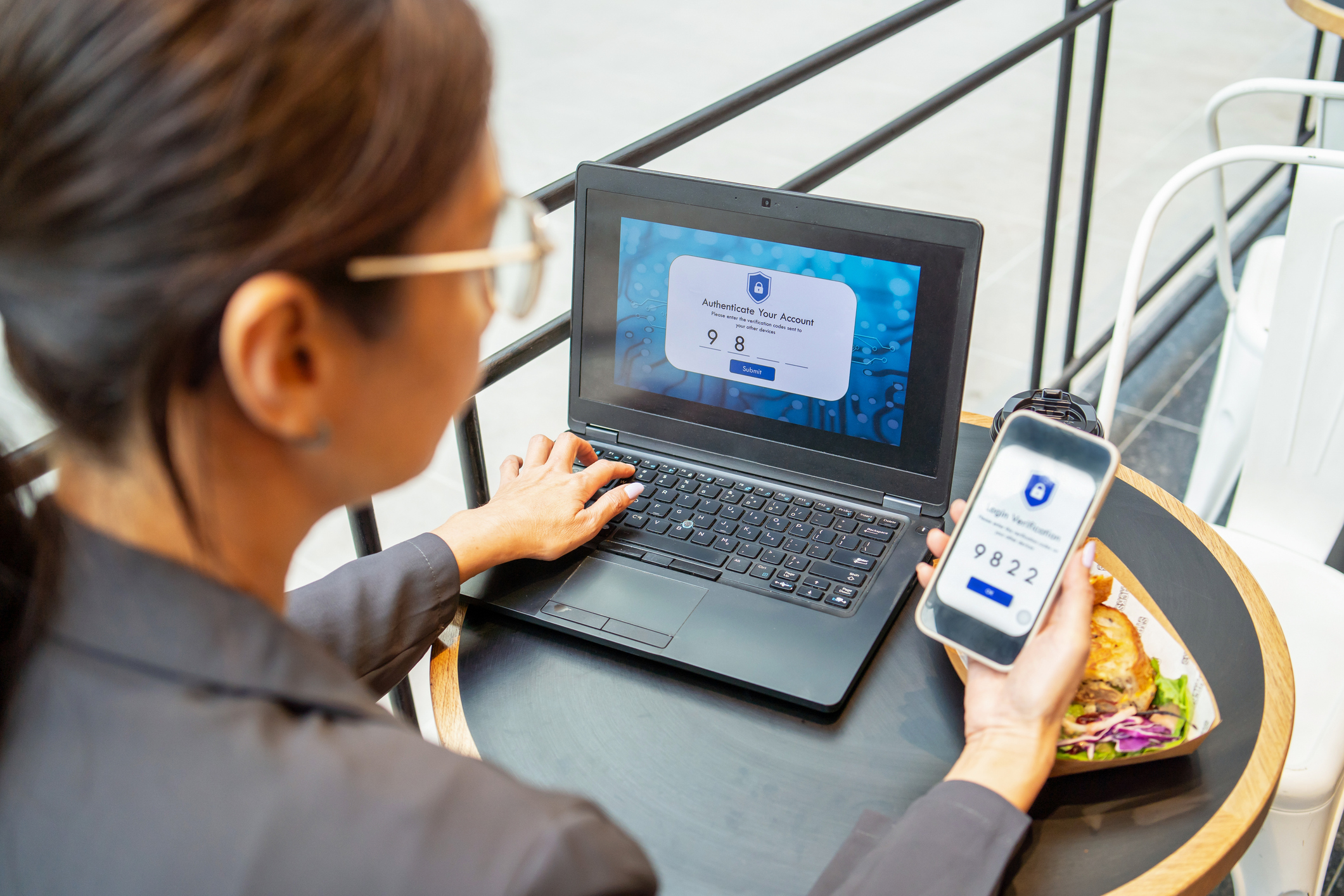The US experienced more data breaches in 2023 than in 2022 before the year even came to a close. USA Today predicts that this number will continue to climb and that by 2031 “attacks on businesses, consumers, governments and devices will happen every two seconds.” This significant increase indicates that cybercriminals are using every tool they can to access sensitive data. For organizations, protecting their online activity has never been more critical.
One such way is to use Virtual Private Networks (VPNs), which allow companies to encrypt their data even when their employees are on the road. Read on to learn how VPNs protect data, the security risks that still exist even if they are used, how to tackle VPN security risks, and how insurance can help in worst-case scenarios.

Why would organizations use a VPN?
VPNs work by encrypting data sent over the internet. Data flows from a device to a VPN provider’s server. Along the way, the data is encrypted and cannot be decrypted unless the user has the correct password, known as an encryption key. This key is only known to the accessing device and the VPN server, making the data more secure in transit.
For organizations, VPNs make their internet activity more private. Employees can work from coffee shops and use public Wi-Fi without worrying about bad actors easily accessing their data. Workers can even access region-locked content or bypass government restrictions on their internet usage abroad, as VPNs spoof the user’s location. These features help make VPNs incredibly useful for organizations.
What are the security risks of VPNs?
Despite their usefulness, VPNs also have weaknesses. One of their inherent shortcomings is that a VPN needs to be accessible via the public internet to function, which makes its activity visible and susceptible to attack if the encryption is broken.
Another drawback is the complexity of VPNs. They boast features such as location spoofing and data encryption, but these features are challenging to maintain. Each point along its functionality represents a potential vulnerability, and considerable effort has to be made to keep the individual features of a VPN updated and protected. Ineffectual management, misconfigurations, missed software updates, and more can all combine to create VPN security risks.
Also read: Recently Updated Data Breach Laws By State
What about self-managed VPNs?
One way that organizations maintain control of their data is to use a self-managed VPN. These are VPNs managed by the company’s IT team.
The primary difference between a VPN and a self-managed VPN is that a provider’s VPN is hosted on the cloud. In contrast, a self-managed VPN is usually built into the on-premises hardware of a company’s devices, which means IT teams have more control. However, this configuration removes the privacy that VPN providers offer by funneling data through their servers. Self-managed VPNs are also a challenge for companies with employees on the road or working remotely.
Another drawback to self-managed VPNs is that they have more security risks due to their popularity. The abundance of self-managed VPNs makes them a target for hackers, as they can focus their efforts on a system that, if broken into, gives them access to a wide range of company data.
Regardless of whether companies use VPNs from a provider or implement a self-managed VPN, they’ll need to take steps to ensure their VPN safeguards against cybercrime.
How can VPNs become more secure?
Cyberattacks constantly change, and hackers use innovations to bypass existing security measures. To tackle VPN security risks, companies should:
- Stay up-to-date: The most urgent action organizations can take is to update and patch their VPN consistently. IT teams should ensure automatic updates are switched on to allow VPNs to take advantage of any innovations in cybersecurity.
- Enable multi-factor authentication (MFA): With MFA, users are not just asked for their username and password. Instead, they have to provide additional verification methods, such as a code sent to their phone, making it more likely that they truly own a device.
- Limited access: Organizations should limit who has access to online login portals and the level of access a user has even when they are on the system. With limited access, hackers that gain entry to the network cannot gather all data, helping to protect sensitive information.
- Avoid free VPNs: Not all VPNs are created equal, and having a VPN that is feature-complete with a dedicated support staff will ensure its cybersecurity offerings are as robust as possible. Organizations should look up customer reviews and research a VPN provider’s reputation before making a final choice.
Learn more: A Comprehensive Cyber Insurance Overview
What other measures should organizations take?
While every effort can be made to safeguard data, organizations remain at risk of cyberattacks and resulting data breaches. A final step organizations can take is to prepare for the worst by relying on cyber insurance.
The right insurance from a reliable provider can make the difference between a company surviving or folding under a successful data breach. McGowan Pro stands ready to provide cyber insurance coverage. Our dedicated team is constantly adapting to the changing cybersecurity climate, fulfilling the changing needs of our clients, and delivering best-in-class premiums, products, and customer service.
McGowan Program Administrators’ Information Security & Data Privacy Liability Insurance provides a range of industry-leading coverages that protect against growing data security and privacy threats.
Contact us today to discover how we can support you.

